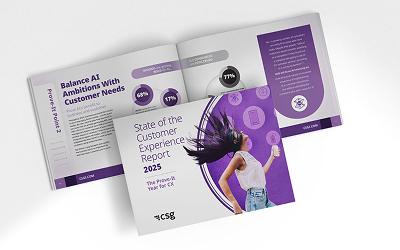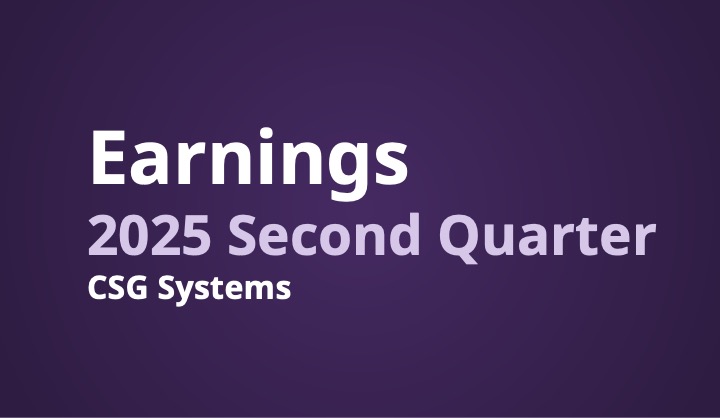Cybersecurity demands are evolving rapidly as the way we conduct business shifts. Companies that fail to adapt to these changes are at risk of being hacked and suffering a data breach. In the past, communication service providers (CSPs) and other businesses relied on perimeter security architecture: using a border (firewall) to protect the network and enterprise data. Now, increases in remote workforces and wider use of cloud and edge computing mean more users and devices are working outside that border. Perimeter-based defenses alone are not sufficient.
Why Is Zero Trust Security Important for 5G and Digital Ecosystems?
5G and digital ecosystems are creating new opportunities for businesses, but they also introduce new security risks. 5G has a huge capacity for connections, which means there are more potential entry points for attackers. Digital ecosystems involve multiple partners sharing data, which makes it difficult to maintain a consistent security approach across the entire ecosystem.
In the first blog in this series, we described six components of 5G Zero Trust architecture. Zero Trust is critically important in a 5G world. In this blog, we’ll compare Zero Trust security to the standard perimeter-based approach. We’ll also discuss how CSPs can defend against the greater security risks introduced by their collaboration with enterprise partners to create digital ecosystems.
What Is Zero Trust Security?
Zero Trust security is an approach that protects applications and devices wherever they reside—inside or outside the perimeter. It is based on the principle of “never trust, always verify.” This means that all users, devices and applications must be authenticated and authorized before they are granted access to any resources (e.g., applications, devices, and data.)
Zero Trust Security vs. Traditional Approaches
Zero Trust security differs significantly from traditional approaches like perimeter-based security. Here are some of those differences:
| Perimeter-Based Security | 5G Zero Trust Architecture | |
|---|---|---|
| Assumption of Trust |
Users and devices inside the corporate network boundary are assumed to be trustworthy. Access to data and resources is granted freely after users and devices are inside the perimeter. |
Never trust, always verify. No device, user or network is inherently trustworthy, regardless of location. Any user, device or application without proper credentials and permissions is denied access to critical assets. |
| What gets secured? |
The network perimeter Castle and moat strategy: One large security perimeter (the moat) protects the internal network (castle). Firewalls and other security devices control traffic at the boundary between the internal network and the internet. |
Resources (data, assets, applications and services), wherever they reside (on premises, cloud, or at the edge) Access to resources (data, assets, applications and services) is only granted to users and devices that are authorized and approved. |
| Access Control | Access decisions are based on
|
Continuous, context-aware access control. Access decisions are based on real-time assessments of
|
| Access Privileges |
Broad access privileges are granted to users based on their roles. This may allow access to more resources than necessary. |
Least privilege: Users and devices are granted access to the bare minimum network resources needed to accomplish their tasks. This reduces the potential impact of a security breach. |
| Dynamic access control? | May not dynamically adjust access privileges based on real-time changes in user behavior or risk. | Yes. Adjusts access privileges based on continuously updated risk assessments and contextual information. |
| Use micro-segmentation? | Difficult to scale in a perimeter-based approach. | Yes. Micro-segmentation decreases the attack surface and quickly contains breaches. |
| Continuous monitoring? | No. Traditional security teams conduct periodic assessments or log reviews to detect security incidents. | Yes. Zero Trust security teams employ continuous monitoring and behavior analytics to promptly detect and respond to anomalies and potential security threats. |
More Partnerships and Connections Mean Greater Need for Strong Data Security
CSPs have become digital service providers, partnering with enterprises to develop innovative products and services that will transform healthcare, manufacturing, transportation and other industries. With its faster speed, lower latency and high capacity, 5G supports the development of Internet of Things (IoT) and lifesaving technologies such as vehicle safety systems, medical devices and connected ambulances that transmit patient information to the emergency room during transport.
While 5G and digital ecosystems make innovation possible, they also increase cybersecurity risks. As the world becomes more interconnected—with devices, applications and digital ecosystems sharing vast amounts of data—there is a greater risk of that data falling into the wrong hands. Protection against 5G cybersecurity threats is essential.
There are several security concerns associated with 5G and digital ecosystems:
- Expanded attack surface: 5G’s massive connectivity capacity increases the number of potential entry points for attackers.
- Interconnected applications: Digital ecosystems rely on interconnected applications, making it difficult to maintain a consistent security posture.
- Inconsistent security measures: Collaborating with multiple partners increases the risk of security vulnerabilities, especially when partners have varying security practices.
- Data privacy concerns: Sharing data with multiple partners raises concerns about data privacy and security.
- Security measures may be short-changed: Development teams may overlook or postpone security measures in the rush to release new services.
- Security gaps in legacy systems: Combining legacy systems with new 5G and digital ecosystem components may introduce security gaps.
To protect data that’s shared with digital ecosystem partners across 5G networks, telecoms must have a security first mindset. Telecoms should prioritize security at the beginning of any new partnership, establishing clear security policies, collaboration frameworks and partner agreements.
A security-from-the-start strategy should include:
Zero Trust security. Zero Trust is adaptable to the constantly evolving threat landscape and business needs. It can be integrated into existing IT environments and scaled to support new technologies, making it suitable for telecoms operating in dynamic and fast-paced industries. 5G Zero Trust architecture provides protection against 5G network threats.
Security-by-design approach. When designing new products and services, involve security experts in the early stages to identify and mitigate potential security risks before they become critical issues.
Continuous monitoring and response. Real-time monitoring of user behavior and network traffic quickly detects anomalous behavior and potential security incidents, allowing prompt responses that prevent or minimize the damage of a cyberattack.
Collaboration with security experts. Partner with cybersecurity firms and experts to enhance the security capabilities of the digital ecosystem. CSPs can benefit from their expertise in conducting assessments to identify and address potential vulnerabilities.
Zero Trust security is a critical component of a secure digital ecosystem. By implementing Zero Trust security, CSPs and partners can mitigate the security risks associated with 5G and build a secure digital ecosystem that protects their data and customers.
CSG SaaS solutions include fully managed, comprehensive cybersecurity. Built on established, trusted industry standards, CSG’s industry-leading cloud security program delivers scalable solutions for your business. CSG’s solutions are balanced with governance, compliance, and continuous validation for effective, real-world security. Our programs run on a secure foundation encompassing best-in-class security operations, security testing and incident response that ensures your customers’ data remains private and secure.
Contact us to learn more about our security approach.
Let’s Connect at MWC Barcelona
We are in Hall 5, Stand #5A51. Book a meeting now to bring your questions to our experts.











